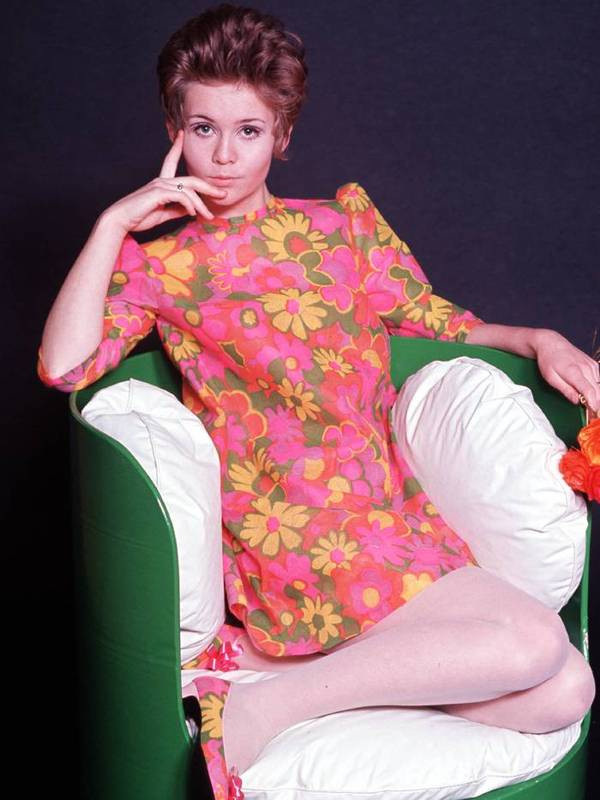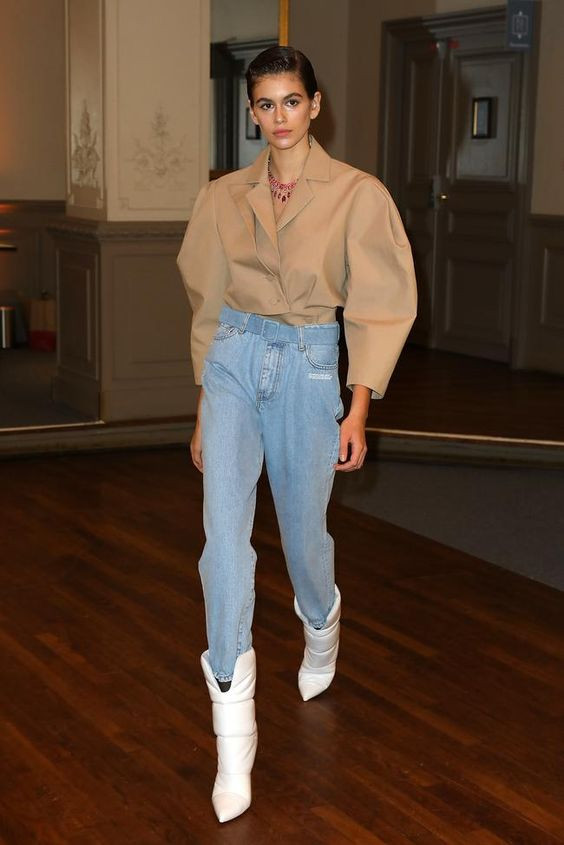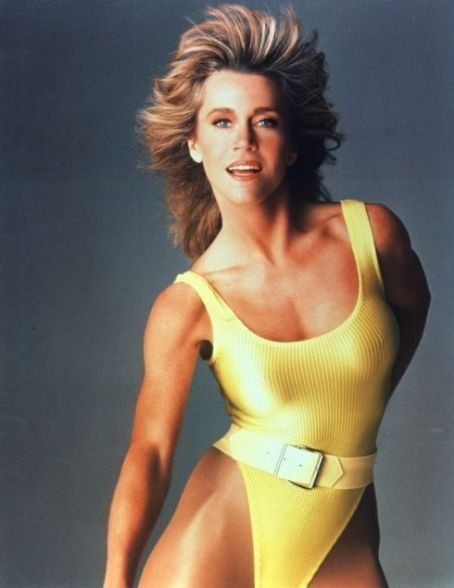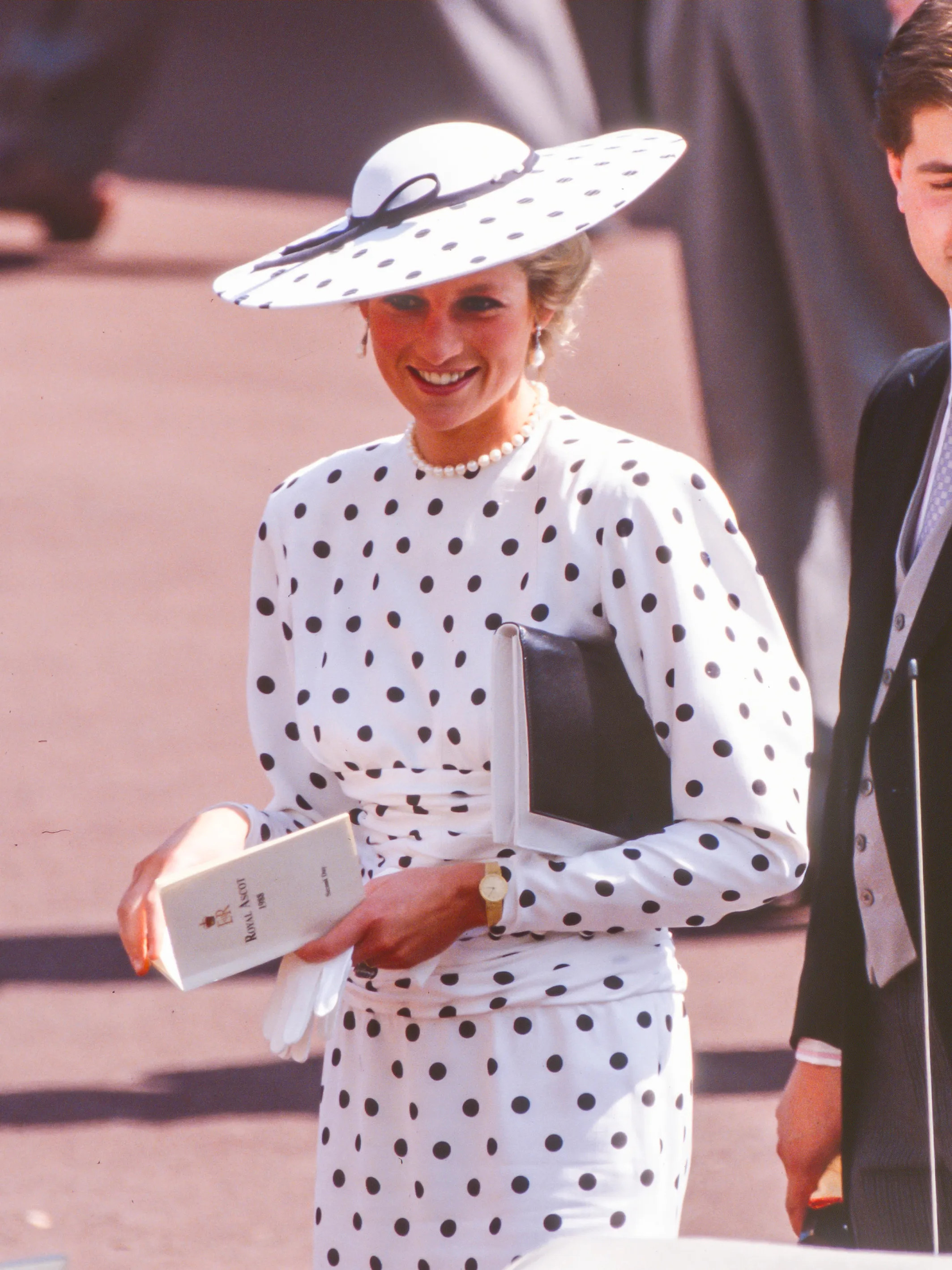Retro Fashion Style is a captivating trend that draws inspiration from past eras, offering a unique blend of nostalgia and contemporary flair. At mens-fashion.net, we’re dedicated to helping you navigate this exciting landscape, providing insights into the key elements of retro fashion for men and offering tips on how to incorporate them into your wardrobe. We aim to empower you to confidently express your unique style by embracing vintage clothing, retro-inspired outfits, and timeless fashion trends. Let’s explore the exciting world of retro fashion and discover how to make it your own, along with related styles like vintage menswear, classic styles and throwback trends.
Table of Contents
- What Is Retro Fashion Style?
- Why Is Retro Fashion Style So Popular?
- What Eras Influence Retro Fashion Style?
- What Are The Key Elements Of Retro Fashion Style For Men?
- How To Incorporate Retro Fashion Style Into Your Wardrobe?
- What Are Some Iconic Retro Fashion Outfits For Men?
- What Are The Best Places To Shop For Retro Fashion Style?
- How To Care For Retro Fashion Style Clothing?
- How Can You Express Your Individuality Through Retro Fashion?
- What Are The Emerging Trends In Retro Fashion Style?
- Frequently Asked Questions (FAQs)
1. What Is Retro Fashion Style?
Retro fashion style is re-embracing clothing, accessories, and overall aesthetics from past eras. It’s more than just wearing old clothes; it’s about interpreting and re-contextualizing vintage styles for the modern man.
1.1 Definition Of Retro Fashion Style
Retro fashion, at its heart, is the conscious revival of styles, trends, and silhouettes from bygone eras. Instead of blindly copying outfits from the past, retro fashion encourages a thoughtful curation and adaptation of vintage elements into contemporary wardrobes. Think of it as a stylish conversation with history, where each garment tells a story. According to the Fashion Institute of Technology (FIT), the retro fashion era provides nostalgia and offers the ability to express individuality by reinterpreting the past.
1.2 Key Characteristics Of Retro Fashion Style
- Nostalgia: A fondness for the past, often linked to specific cultural moments or personal memories.
- Reinterpretation: Taking vintage elements and updating them to fit modern sensibilities and body types.
- Individuality: Using retro fashion as a way to express personal style and stand out from the crowd.
- Sustainability: Embracing vintage and secondhand clothing as an alternative to fast fashion.
- Timelessness: A focus on classic silhouettes and quality materials that transcend fleeting trends.
1.3 Differences Between Retro, Vintage, And Modern Fashion
| Feature | Retro Fashion | Vintage Fashion | Modern Fashion |
|---|---|---|---|
| Definition | Inspired by past eras, but not necessarily from those eras | Clothing and accessories actually from a specific past era (typically 20+ years) | Current trends and styles |
| Origin | Newly produced items designed to resemble vintage styles | Original items from a specific past era | Newly produced items reflecting current trends |
| Condition | Typically new or in excellent condition | May show signs of wear and tear due to age | New or in excellent condition |
| Availability | Widely available in retail stores and online | Often found in vintage shops, thrift stores, and online marketplaces | Widely available in retail stores and online |
| Price | Can range from affordable to high-end, depending on the brand and quality | Varies greatly depending on the rarity, condition, and desirability of the item | Can range from affordable to high-end, depending on the brand and quality |
| Sustainability | Can be more sustainable than modern fast fashion if it encourages buying less and wearing more | Inherently sustainable as it promotes reusing existing items | Can contribute to overconsumption and waste if not purchased mindfully |




2. Why Is Retro Fashion Style So Popular?
Retro fashion isn’t just a fleeting trend; it’s a cultural phenomenon with deep roots. Its enduring popularity stems from several factors, appealing to a wide range of men with diverse motivations.
2.1 The Appeal Of Nostalgia In Fashion
Nostalgia is a powerful emotion, and retro fashion taps directly into it. Wearing clothing reminiscent of past eras can evoke feelings of comfort, familiarity, and a connection to simpler times.
2.2 Individuality And Self-Expression Through Retro Style
In a world of mass-produced trends, retro fashion offers a unique avenue for self-expression. By carefully curating vintage pieces and incorporating them into their wardrobes, men can create a style that is truly their own. Retro styles allows you to stand out in a crowd, showcasing your personality and appreciation for unique finds.
2.3 Retro Fashion As A Reaction To Fast Fashion
The rise of fast fashion has led to a growing awareness of its environmental and social impact. Retro fashion provides a sustainable alternative by encouraging the reuse of existing clothing and reducing the demand for new production. According to a study by the Fashion Revolution, extending the life of clothing by just nine months can reduce carbon, water, and waste footprints by 20-30%.
2.4 The Influence Of Pop Culture On Retro Trends
Movies, music, and television shows set in past eras often spark a renewed interest in the fashion of those times. Iconic characters and memorable outfits can inspire men to incorporate retro elements into their own style.
2.5 The Enduring Quality And Craftsmanship Of Vintage Clothing
Many vintage garments were made with higher quality materials and construction techniques than those used in modern mass-produced clothing. This durability and attention to detail make vintage pieces desirable for men who value longevity and craftsmanship.
3. What Eras Influence Retro Fashion Style?
Retro fashion is a broad category encompassing a wide range of eras, each with its distinct style and character. Understanding these eras is key to navigating the world of retro fashion and finding the styles that resonate with you.
3.1 1920s: The Jazz Age And The Roaring Twenties
- Key Characteristics: Sharp suits, pinstripes, fedoras, Oxford shoes, Art Deco patterns, and a sense of sophistication and rebellion.
- Iconic Garments: Double-breasted suits, newsboy caps, wingtip shoes, and pocket watches.
- Inspiration: The Great Gatsby, jazz music, and the flapper culture.
3.2 1950s: The Era Of Rock ‘N’ Roll And Rebellion
- Key Characteristics: Classic Americana, leather jackets, denim jeans, T-shirts, greaser style, and a rebellious attitude.
- Iconic Garments: Motorcycle jackets, white T-shirts, blue jeans, bomber jackets, and saddle shoes.
- Inspiration: Elvis Presley, James Dean, Rebel Without a Cause, and the birth of rock ‘n’ roll.
3.3 1960s: The Mod Era And The British Invasion
- Key Characteristics: Slim-fitting suits, bold colors, geometric patterns, Chelsea boots, and a youthful, modern aesthetic.
- Iconic Garments: Nehru jackets, turtlenecks, drainpipe trousers, and Beatle boots.
- Inspiration: The Beatles, Mad Men, and the rise of youth culture.
3.4 1970s: The Disco Era And The Age Of Self-Expression
- Key Characteristics: Flared trousers, platform shoes, velvet jackets, psychedelic prints, and a sense of freedom and individuality.
- Iconic Garments: Bell-bottom jeans, corduroy suits, floral shirts, and platform boots.
- Inspiration: Saturday Night Fever, disco music, and the rise of bohemianism.
3.5 1980s: The Power Dressing Era And The Rise Of Pop Culture
- Key Characteristics: Bold colors, oversized silhouettes, shoulder pads, acid-washed denim, and a focus on status and image.
- Iconic Garments: Power suits, Members Only jackets, tracksuits, and high-top sneakers.
- Inspiration: Miami Vice, MTV, and the rise of consumerism.
4. What Are The Key Elements Of Retro Fashion Style For Men?
While each era has its unique characteristics, there are some key elements that are common to retro fashion in general. These elements can be used to create a variety of stylish and individual looks.
4.1 Vintage Clothing Pieces And Accessories
- Jackets: Leather jackets (bomber, motorcycle), denim jackets, tweed blazers, and varsity jackets.
- Shirts: Button-down shirts (Oxford, chambray), T-shirts (plain, graphic), polo shirts, and Hawaiian shirts.
- Trousers: Jeans (straight-leg, bootcut), chinos, corduroys, and wide-leg trousers.
- Shoes: Oxford shoes, brogues, Chelsea boots, desert boots, and sneakers (Converse, Adidas).
- Accessories: Hats (fedora, newsboy cap, baseball cap), belts (leather, fabric), sunglasses (aviator, wayfarer), watches (classic, vintage), and scarves.
4.2 Color Palettes And Patterns
- 1950s: Muted colors (navy, gray, olive), pastel shades (pink, blue, green), and classic patterns (stripes, polka dots).
- 1960s: Bold colors (red, yellow, blue), geometric patterns (stripes, checks), and psychedelic prints.
- 1970s: Earth tones (brown, orange, green), warm colors (red, yellow), and floral patterns.
- 1980s: Bright colors (neon, primary colors), bold patterns (geometric, animal print), and color blocking.
4.3 Silhouettes And Cuts
- 1950s: Classic, fitted silhouettes, emphasizing the shoulders and chest.
- 1960s: Slim, streamlined silhouettes, with clean lines and minimal details.
- 1970s: Relaxed, flowing silhouettes, with flared trousers and loose-fitting tops.
- 1980s: Oversized, boxy silhouettes, with wide shoulders and voluminous shapes.
4.4 Fabrics And Textures
- Cotton: A versatile and comfortable fabric used in shirts, T-shirts, and trousers.
- Denim: A durable and rugged fabric used in jeans, jackets, and shirts.
- Leather: A luxurious and durable material used in jackets, shoes, and accessories.
- Wool: A warm and insulating fabric used in suits, blazers, and sweaters.
- Corduroy: A textured and durable fabric used in trousers, jackets, and shirts.
4.5 Hairstyles And Grooming
- 1950s: Slicked-back hair, pompadours, and side parts.
- 1960s: Short, neat haircuts, and mod hairstyles.
- 1970s: Long hair, afros, and mustaches.
- 1980s: Big hair, perms, and sculpted hairstyles.
5. How To Incorporate Retro Fashion Style Into Your Wardrobe?
Incorporating retro fashion into your wardrobe doesn’t mean completely abandoning your current style. It’s about adding vintage-inspired pieces and elements to create a unique and personal look.
5.1 Start With Key Pieces
Begin by adding a few key vintage or retro-inspired pieces to your wardrobe. A leather jacket, a pair of vintage jeans, or a classic button-down shirt can be a great starting point.
5.2 Mix And Match Vintage And Modern Clothing
Don’t be afraid to mix vintage and modern clothing to create a unique and balanced look. Pair a vintage T-shirt with modern jeans, or a retro blazer with contemporary trousers.
5.3 Pay Attention To Fit And Proportion
Vintage clothing often has different fits and proportions than modern clothing. Make sure that the pieces you choose fit you well and flatter your body type. Tailoring can be a great way to ensure a perfect fit.
5.4 Accessorize Wisely
Accessories can be a great way to add a touch of retro style to your look. Choose accessories that are authentic to the era you are trying to emulate, such as a fedora, a pair of aviator sunglasses, or a vintage watch.
5.5 Be Authentic And Confident
The most important thing is to be authentic and confident in your style. Don’t try to force a look that doesn’t feel natural to you. Embrace your individuality and have fun with it!
6. What Are Some Iconic Retro Fashion Outfits For Men?
To give you some inspiration, here are a few iconic retro fashion outfits for men that you can try:
6.1 The 1950s Rebel
- Key Pieces: White T-shirt, blue jeans, leather motorcycle jacket, and engineer boots.
- Details: Roll up the sleeves of the T-shirt, add a pack of cigarettes in the pocket, and style your hair with pomade.
- Inspiration: James Dean in Rebel Without a Cause.
6.2 The 1960s Mod
- Key Pieces: Slim-fitting suit, turtleneck sweater, Chelsea boots, and a neat haircut.
- Details: Choose a suit in a bold color or geometric pattern, and accessorize with a skinny tie and a pair of sunglasses.
- Inspiration: The Beatles in their early years.
6.3 The 1970s Disco King
- Key Pieces: Flared trousers, a velvet jacket, a floral shirt, and platform boots.
- Details: Choose a shirt with a bold floral print, and accessorize with a gold chain and a pair of sunglasses.
- Inspiration: John Travolta in Saturday Night Fever.
6.4 The 1980s Power Broker
- Key Pieces: Power suit, wide-shouldered blazer, bold tie, and dress shoes.
- Details: Choose a suit in a bold color or pattern, and accessorize with a statement watch and a pair of suspenders.
- Inspiration: Gordon Gekko in Wall Street.
6.5 The Modern Retro Look
- Key Pieces: Vintage T-shirt, modern jeans, leather jacket, and sneakers.
- Details: Choose a vintage T-shirt with a cool graphic print, and pair it with slim-fit jeans and contemporary sneakers.
- Inspiration: A mix of different eras and styles, creating a unique and personal look.
7. What Are The Best Places To Shop For Retro Fashion Style?
Finding the right pieces is crucial to creating your retro fashion style. Here are some of the best places to shop for vintage and retro-inspired clothing:
7.1 Vintage Stores And Thrift Shops
- Pros: Unique and one-of-a-kind pieces, affordable prices, and a sustainable shopping experience.
- Cons: Requires time and effort to search for the right items, may require cleaning or repairs.
- Tips: Look for well-known vintage stores in your area, and don’t be afraid to dig through the racks at thrift shops.
7.2 Online Marketplaces And Auctions
- Pros: Wide selection of vintage clothing, easy to search for specific items, and competitive prices.
- Cons: Requires careful inspection of photos and descriptions, may involve bidding wars, and shipping costs can add up.
- Popular Platforms: Etsy, eBay, and Depop.
7.3 Retro-Inspired Clothing Brands
- Pros: New clothing with vintage designs, consistent sizing and fit, and easy returns.
- Cons: Can be more expensive than vintage clothing, may lack the unique character of vintage pieces.
- Examples: Steady Clothing, Collectif, and Unique Vintage.
7.4 Consignment Shops
- Pros: Gently used clothing in good condition, curated selection of vintage and designer pieces, and a more upscale shopping experience.
- Cons: Can be more expensive than thrift shops, and the selection may be limited.
- Tips: Look for consignment shops in affluent areas, as they are more likely to have high-quality vintage clothing.
7.5 Flea Markets And Vintage Fairs
- Pros: A wide variety of vintage clothing, accessories, and collectibles, and a fun and social shopping experience.
- Cons: Can be crowded and overwhelming, and prices may be negotiable.
- Tips: Arrive early for the best selection, and be prepared to haggle.
8. How To Care For Retro Fashion Style Clothing?
Proper care is essential to preserving the life and quality of your vintage and retro clothing. Here are some tips on how to care for your garments:
8.1 Washing And Cleaning Instructions
- Read the care label: Follow the instructions on the garment’s care label carefully.
- Hand wash delicate items: Hand wash delicate items such as silk, lace, and beaded garments.
- Use a gentle detergent: Use a mild detergent specifically designed for delicate fabrics.
- Avoid harsh chemicals: Avoid using bleach, fabric softener, or other harsh chemicals.
8.2 Storage Tips
- Store in a cool, dry place: Store your clothing in a cool, dry place away from direct sunlight and heat.
- Use padded hangers: Use padded hangers to prevent shoulder indentations and maintain the garment’s shape.
- Store delicate items in garment bags: Store delicate items in garment bags to protect them from dust and moths.
8.3 Repairing And Altering Vintage Clothing
- Find a skilled tailor: Find a tailor who is experienced in working with vintage clothing.
- Use vintage-appropriate materials: Use vintage-appropriate materials for repairs and alterations.
- Preserve original details: Preserve original details such as buttons, zippers, and labels whenever possible.
8.4 Preventing Damage And Wear
- Avoid over-wearing: Avoid wearing the same garment too often, as this can accelerate wear and tear.
- Protect from moths: Protect your clothing from moths by using mothballs or cedar chips.
- Handle with care: Handle your clothing with care, and avoid pulling or stretching delicate fabrics.
8.5 Professional Cleaning Services
- Dry cleaning: Dry clean delicate items or garments that cannot be washed.
- Specialty cleaning: Seek out specialty cleaning services for antique or particularly fragile items.
- Ask for recommendations: Ask your tailor or vintage store owner for recommendations on professional cleaning services in your area.
9. How Can You Express Your Individuality Through Retro Fashion?
Retro fashion is more than just copying styles from the past; it’s about using vintage-inspired elements to express your unique personality and create a style that is all your own.
9.1 Choosing Eras And Styles That Resonate With You
- Explore different eras: Experiment with different eras and styles to find the ones that resonate with you personally.
- Consider your interests: Choose styles that reflect your interests, hobbies, and passions.
- Don’t be afraid to mix and match: Mix and match elements from different eras to create a unique and unexpected look.
9.2 Personalizing Your Retro Outfits
- Add personal touches: Add personal touches to your retro outfits, such as a favorite accessory, a unique hairstyle, or a custom-made garment.
- Embrace your individuality: Don’t be afraid to break the rules and create a style that is all your own.
- Use retro fashion as a form of self-expression: Use retro fashion to express your personality, values, and beliefs.
9.3 Incorporating Modern Elements
- Balance vintage and modern: Strike a balance between vintage and modern elements to create a look that is both timeless and contemporary.
- Use modern accessories: Use modern accessories to update your retro outfits and make them more relevant to today’s trends.
- Don’t be afraid to experiment: Don’t be afraid to experiment with different combinations of vintage and modern clothing to create a unique and personal style.
9.4 Building A Wardrobe That Reflects Your Personality
- Curate your wardrobe: Curate your wardrobe carefully, choosing pieces that reflect your personality and style.
- Invest in quality pieces: Invest in quality pieces that will last for years and become staples in your wardrobe.
- Create a signature look: Develop a signature look that is instantly recognizable and reflects your unique personality.
9.5 Finding Inspiration From Unexpected Sources
- Look beyond fashion magazines: Find inspiration from unexpected sources, such as movies, music, art, and history.
- Explore different cultures: Explore different cultures and time periods to find unique and inspiring styles.
- Be open to new ideas: Be open to new ideas and don’t be afraid to try something different.
10. What Are The Emerging Trends In Retro Fashion Style?
Retro fashion is constantly evolving, with new trends emerging all the time. Here are some of the emerging trends in retro fashion style for men:
10.1 The Revival Of Specific Decades
- The 1990s: Grunge, hip-hop, and rave culture are all making a comeback.
- The early 2000s: Low-rise jeans, crop tops, and tracksuits are gaining popularity.
- The 1970s: Disco, bohemian, and glam rock styles are experiencing a resurgence.
10.2 Sustainable And Ethical Retro Fashion
- Upcycling and repurposing: Transforming vintage clothing into new and unique pieces.
- Supporting ethical brands: Choosing brands that prioritize sustainable and ethical production practices.
- Buying less and wearing more: Focusing on quality over quantity and extending the life of your clothing.
10.3 Gender-Fluid Retro Fashion
- Breaking down gender stereotypes: Embracing styles that are traditionally associated with the opposite gender.
- Experimenting with silhouettes and colors: Playing with different silhouettes and colors to create a unique and androgynous look.
- Challenging fashion norms: Challenging traditional fashion norms and expressing individuality through clothing.
10.4 The Influence Of Social Media
- Instagram and TikTok: Platforms for sharing retro-inspired outfits and discovering new trends.
- Vintage influencers: Individuals who showcase vintage clothing and inspire others to embrace retro style.
- Online communities: Groups where people can connect, share ideas, and buy and sell vintage clothing.
10.5 The Fusion Of Retro And Technology
- Smart clothing: Integrating technology into vintage-inspired garments.
- 3D-printed accessories: Creating unique and futuristic accessories inspired by retro designs.
- Virtual reality fashion shows: Experiencing retro fashion in a virtual reality environment.
11. Frequently Asked Questions (FAQs)
Here are some frequently asked questions about retro fashion style for men:
11.1 Is Retro Fashion Only About Wearing Old Clothes?
No, retro fashion is not just about wearing old clothes. It’s about reinterpreting and re-contextualizing vintage styles for the modern man.
11.2 How Can I Find My Own Retro Style?
Experiment with different eras and styles, and choose the ones that resonate with you personally. Consider your interests, hobbies, and passions, and don’t be afraid to mix and match elements from different eras.
11.3 Where Can I Find Affordable Retro Clothing?
Vintage stores, thrift shops, and online marketplaces are great places to find affordable retro clothing.
11.4 How Do I Care For Vintage Clothing?
Follow the care label carefully, hand wash delicate items, use a gentle detergent, and store your clothing in a cool, dry place.
11.5 Can I Wear Retro Fashion To Formal Events?
Yes, you can wear retro fashion to formal events. Choose a classic retro style, such as a 1920s-inspired suit or a 1950s-inspired tuxedo, and make sure that the garment fits you well and is in good condition.
11.6 What Are Some Common Mistakes To Avoid When Wearing Retro Fashion?
- Wearing clothing that doesn’t fit well.
- Overdoing the retro look.
- Not paying attention to details.
- Being afraid to experiment.
- Not being authentic.
11.7 How Can I Stay Up-To-Date On Retro Fashion Trends?
Follow retro fashion bloggers and influencers on social media, read fashion magazines and websites, and attend vintage fairs and fashion shows. Visit mens-fashion.net regularly for the latest trends and advice.
11.8 Can I Mix Retro Fashion With Other Styles?
Yes, you can mix retro fashion with other styles to create a unique and personal look.
11.9 Is Retro Fashion Only For Young People?
No, retro fashion is for people of all ages. It’s about expressing your individuality and having fun with style.
11.10 How Can I Make Sure My Retro Outfit Looks Authentic?
Research the era you are trying to emulate, pay attention to details, and choose garments that are authentic to the period.
Retro fashion style is a fun and rewarding way to express your individuality and connect with the past. By understanding the key elements of retro fashion and following these tips, you can create a unique and personal style that is all your own. Visit mens-fashion.net for more inspiration and advice on retro fashion and other men’s style topics.
Ready to embrace the allure of retro fashion and elevate your style? Explore the endless possibilities of vintage-inspired looks and discover how to make them your own. For the latest trends, expert advice, and a curated selection of retro-inspired pieces, visit mens-fashion.net today. Transform your wardrobe and express your unique personality with the timeless appeal of retro fashion!
Address: 227 W 27th St, New York, NY 10001, United States
Phone: +1 (212) 217-5800
Website: mens-fashion.net